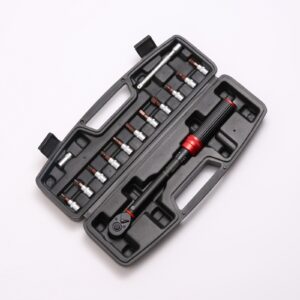Unleashing the Power of Electronics: The Role of Diodes and Transistors in Electronic Circuits
Welcome, tech enthusiasts, to our electrifying exploration into the world of electronic circuit components! Today, we’re delving deep into two indispensable components that power up our devices and make modern technology possible: diodes and transistors. These tiny yet mighty wonders play a pivotal role in controlling the flow of electricity, amplifying signals, switching on and off with lightning speed, and so much more.
Whether you’re an aspiring engineer or simply curious about how your gadgets come to life, this blog post will serve as your guide through the intricate web of diodes and transistors. So fasten your seatbelts as we embark on this exhilarating journey together! From understanding their fundamental workings to unraveling their diverse applications – get ready for some electrifying knowledge. Let’s dive right in!
The Basics of Diodes: How They Work and Their Uses in Circuits
Diodes: The Unsung Heroes of Electronic Circuits
When it comes to controlling the flow of electricity, diodes take center stage. These small but mighty components are like traffic controllers for electrons, allowing current to flow in one direction while blocking it in the other. How do they accomplish this feat? Through a process called “forward bias” and “reverse bias.”
In forward bias, when the voltage across a diode is greater than its threshold voltage (typically around 0.7 volts for silicon diodes), electrons can easily flow from the anode to the cathode. This allows current to pass through unhindered, enabling power supplies and battery chargers to function efficiently.
On the flip side, reverse bias occurs when the voltage across a diode opposes its natural direction of conduction. In this state, most of us would expect no current flow at all – but that’s where things get interesting! Diodes act as formidable barriers in reverse bias mode by creating a high resistance junction that prevents nearly all electron movement.
Now let’s talk about some practical applications of these nifty devices. One common use is rectification – converting alternating current (AC) into direct current (DC). By employing diodes in bridge rectifiers or full-wave rectifiers, we ensure that electrical appliances and electronic gadgets receive steady DC power.
Another critical application lies within voltage regulation circuits. Zener diodes come into play here; they maintain a constant voltage output regardless of input fluctuations – vital for stabilizing voltages in sensitive devices like microcontrollers or integrated circuits.
But wait – there’s more! Diodes also find their place as protective elements against harmful surges and spikes. Think about those surge protectors you plug your precious electronic equipment into; they contain specialized clamping diodes that divert excessive currents away from your cherished gadgets during power surges.
These examples merely scratch the surface when it comes to understanding how crucial diodes are in electronic circuits. Their versatility, reliability, and ability to control the flow

